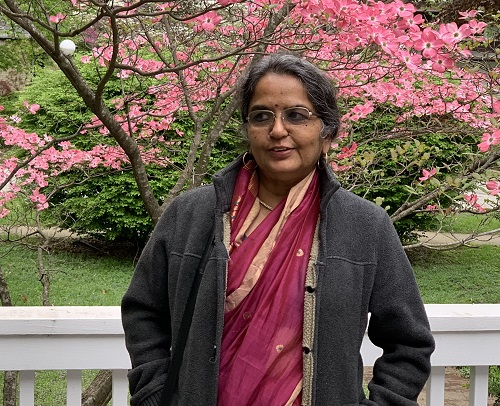 Amita Sinha is a scholar-in-residence at IIT Gandhinagar. She was a visiting professor in the Department of Architecture and Regional Planning, IIT Kharagpur (2018-19) and taught in the Department of Landscape Architecture at the University of Illinois at Urbana Champaign, USA, from 1989 to 2018. She is the author of Landscapes in India: Forms and Meanings (University Press of Colorado, 2006; reprinted by Asia Educational Services, 2011), editor of Landscape Perception (Academic Press, 1995), and co-editor of Cultural Landscapes of South Asia: Studies in Heritage Conservation and Management (Routledge, 2017). She was a Senior Fulbright Researcher at the Indian National Trust for Art and Cultural Heritage (INTACH) in New Delhi in 2009 and is the recipient of Fulbright-Nehru Academic and Professional Excellence Award Fellowship in 2018-19. She received the National Merit Award, American Society of Landscape Architects for Cultural Heritage Project on Taj Mahal, India, in 2001 and Environmental Design Research Association (EDRA) Award in 2018.
Amita Sinha is a scholar-in-residence at IIT Gandhinagar. She was a visiting professor in the Department of Architecture and Regional Planning, IIT Kharagpur (2018-19) and taught in the Department of Landscape Architecture at the University of Illinois at Urbana Champaign, USA, from 1989 to 2018. She is the author of Landscapes in India: Forms and Meanings (University Press of Colorado, 2006; reprinted by Asia Educational Services, 2011), editor of Landscape Perception (Academic Press, 1995), and co-editor of Cultural Landscapes of South Asia: Studies in Heritage Conservation and Management (Routledge, 2017). She was a Senior Fulbright Researcher at the Indian National Trust for Art and Cultural Heritage (INTACH) in New Delhi in 2009 and is the recipient of Fulbright-Nehru Academic and Professional Excellence Award Fellowship in 2018-19. She received the National Merit Award, American Society of Landscape Architects for Cultural Heritage Project on Taj Mahal, India, in 2001 and Environmental Design Research Association (EDRA) Award in 2018.
Abstract of the lectures
The Mandala Landscape
The ancient Indic concept of space was expressed in perfect forms of the mandala. These forms guided the imagination of cosmos, earth, regions, and local sites. The landscape of Bharatvarsha was a network of kshetras (regions) conceived as circular mandalas. The ideal image shaped the evolution of cultural landscapes centred on sites of hierophany. The landscape patterns demonstrated the principle of self-similarity in their duplication and in their repetition at various scales. The mandala was re-enacted in circumambulations around the kshetra that affirmed its sanctity. The lecture will discuss ancient India as a landscape of mandalas with a focus on the Braj and Kashi.
The Mandala in Built Form
The circle was squared in built forms of the city, the temple, and the house. The auspicious energies of the landscape were reified in architecture. Design as a creative act was mimetic of the primordial act of creation. Urban settlements were elaborations of architectural design, using similar conceptual division of space, vocabulary of shapes, and units of measurement. The Hindu temple, having evolved over centuries, exhibits many regional variations in its family of forms, which share a common basis in the Vaastu purusha mandala. The house form adjusted to local climate and site conditions was also designed according to Vaastu purusha mandala with emphasis on courtyard as centre and on directionality in allocation of functions.